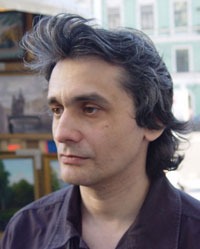Translating acronyms of associations and entities Auteur du fil: Robert Chroscicki
|
|---|
I'm faced with an Italian source text where both the acronym and the full name of an association are both already present, as shown below. The entity does not have their own official acronym in English on its website.
If only the acronym or the name were present, I would obviously put the English translation in brackets, but in this case I'm not sure how to format it, since I want to leave both name and acronym, and a translation is necessary for th... See more I'm faced with an Italian source text where both the acronym and the full name of an association are both already present, as shown below. The entity does not have their own official acronym in English on its website.
If only the acronym or the name were present, I would obviously put the English translation in brackets, but in this case I'm not sure how to format it, since I want to leave both name and acronym, and a translation is necessary for the reader to grasp the target document.
- Un workshop di incontro con la “Società Italiana di Elettromagnetismo” (SIEm) su un tema di interesse comune -
Any ideas?
[Edited at 2012-11-19 22:25 GMT] ▲ Collapse
| | | | | My own temporary solution | Nov 19, 2012 |
This was my solution on the project I delivered.
SIEm - Società Italiana di Elettromagnetismo (Italian Society of Electromagnetics)
[Edited at 2012-11-19 22:26 GMT]
| | | |
I wouldn't say that there is only one acceptable way of doing this but, in my view, your solution is perfectly valid.
I hope you didn't really expect to get helpful advice within 2 minutes, incidentally.
Site members can perform wonders, but miracles take a little longer!
[Edited at 2012-11-19 19:54 GMT]
| | | | Anton Konashenok 
Tchèque (République)
Local time: 15:57
français vers anglais
+ ...
| You are right | Nov 19, 2012 |
Croks, I'd say you have picked the best approach, provided that you also do the following:
1. Check (on Internet or elsewhere) whether the entity in question (SIEm, for instance) has published an official version of its name in your target language, and if so, whether this name has a corresponding acronym.
2. Check whether any publications in the target country (especially official ones) have established a de facto standard in translating the name of this entity into their language, ... See more Croks, I'd say you have picked the best approach, provided that you also do the following:
1. Check (on Internet or elsewhere) whether the entity in question (SIEm, for instance) has published an official version of its name in your target language, and if so, whether this name has a corresponding acronym.
2. Check whether any publications in the target country (especially official ones) have established a de facto standard in translating the name of this entity into their language, and if so, whether an acronym exists.
One should do both checks because their results may not necessarily coincide, and if they don't, the right selection between the two depends on the target audience of the translation.
Anton
P.S. Depending on the target audience, you may also choose between
"name in the source language (name in the target language)"
and
"name in the target language (name in the source language)"
[Edited at 2012-11-19 20:50 GMT] ▲ Collapse
| | |
|
|
|
Tina Vonhof (X)
Canada
Local time: 07:57
néerlandais vers anglais
+ ...
| Your solution is good | Nov 19, 2012 |
But I think I would put the acronym after the Italian name in parentheses, same as in the source text. My suggestion would be to always use square brackets for anything that was not in the source text, such as the English translation, and leave anything in parentheses exactly as in the source text).
| | | | | Format considerations | Nov 19, 2012 |
There's a further consideration raised by Anton's suggestion:
"name in the source language (name in the target language)"
and
"name in the target language (name in the source language)"
I decided to eliminate the source's quotation marks altogether because I couldn't decide where to place them. IMHO the source shouldn't have had them in the first place given the Title Caps and presence of an acronym. I'd love to hear if you that's what you would have done.<... See more There's a further consideration raised by Anton's suggestion:
"name in the source language (name in the target language)"
and
"name in the target language (name in the source language)"
I decided to eliminate the source's quotation marks altogether because I couldn't decide where to place them. IMHO the source shouldn't have had them in the first place given the Title Caps and presence of an acronym. I'd love to hear if you that's what you would have done.
Regarding the suggestion of using square brackets, I would have done so if the text wasn't a press release, which IMHO should rarely if ever contain square brackets. Valid?
[Edited at 2012-11-20 02:43 GMT] ▲ Collapse
| | | | Anton Konashenok 
Tchèque (République)
Local time: 15:57
français vers anglais
+ ...
| Quotation marks | Nov 20, 2012 |
Croks, different languages have slightly different rules for the use of quotation marks. In English, they are used rather sparingly, and in this case I'd definitely omit them.
By the way, different languages may also differ in capitalisation rules. For example, you may want to capitalise every word (standard for U.S. English), every word except articles, prepositions and conjunctions (standard for U.K. English), or just the first word plus any personal names (standard for Russian).
| | | | neilmac
Espagne
Local time: 15:57
espagnol vers anglais
+ ...
| Good solution | Nov 20, 2012 |
Robert Chroscicki wrote:
This was my solution on the project I delivered.
SIEm - Società Italiana di Elettromagnetismo (Italian Society of Electromagnetics)
[Edited at 2012-11-19 22:26 GMT]
This is what I'd have gone for too.
For example, this morning I came up against IGBE (Brazilian Institute of Geography and Statistics). I'd have liked to have called it BIGS, but nobody would know what I was tallking about...
| | | | To report site rules violations or get help, contact a site moderator: You can also contact site staff by submitting a support request » Translating acronyms of associations and entities | Anycount & Translation Office 3000 | Translation Office 3000
Translation Office 3000 is an advanced accounting tool for freelance translators and small agencies. TO3000 easily and seamlessly integrates with the business life of professional freelance translators.
More info » |
| | Trados Studio 2022 Freelance | The leading translation software used by over 270,000 translators.
Designed with your feedback in mind, Trados Studio 2022 delivers an unrivalled, powerful desktop
and cloud solution, empowering you to work in the most efficient and cost-effective way.
More info » |
|
| | | | X Sign in to your ProZ.com account... | | | | | |








